Update your browser for more security, speed and the best experience on this site.
RAGOM Volunteer Stories
On the Road AGAIN and AGAIN–Scott B is RAGOM’s Transporter Extraordinaire. Read his endearing story: “My most memorable transport was Nelly 18-013A, who came from an auction. The foster thought she was pregnant because her stomach was distended. The vet said she wasn’t pregnant; she was in heart failure. Her damaged heart was beating over 300 times a minute, making the abdomen fill with fluid and her life fragile. We had to save her.
The St. Paul veterinarian cardiologist said her congenital heart abnormality caused severe arrhythmia. Then we discovered that only two vets in the country could perform the surgery that she urgently needed. We drove Nelly to the vet in Cincinnati, who operated on Nelly on that Tuesday.
We left our house on Sunday at 4 a.m. and drove straight through to Cincinnati—700 miles. Poor Nelly was pretty lethargic, and we had to carry her out of the van for her to relieve herself.
Nelly’s cardiologist from the Twin Cities flew to Ohio to observe her surgery. They shaved her all the way around from the back of her head to halfway to her tail. They took her off the drugs and put an EKG jacket on her.
We called every hour on the hour to receive updates. Nelly endured a five-hour surgery. We were relieved to know the operation was a success. It was pure joy when we picked her up on Thursday and saw her tail go wild. To view this level of energy back on this little puppy so soon was amazing. When I think of Nelly today, I am grateful that RAGOM stands behind every dog that comes into their care and gives them a second chance.”
SCOTT’S START
“Our daughter who fostered for RAGOM inspired us to follow in her footsteps. When we took in our first foster, Leon 13-402, his temp fosters told us everything about him and also described recent rescues and transports. I thought transporting sounded exciting, so I signed up for the training,” Scott said.
For seven years, Scott Blomgren has been the never-ending transporter for dogs who need a forever home. He is on the road all the time for RAGOM. The number of miles that he has driven could probably take you around the world. He is the ultimate road warrior in the pursuit of saving dogs.
“When we found Leon a forever home, we jumped right in again with a puppy, Levi 14-012, who was with a temp foster in Burnsville. I signed up for a transport to Albert Lea, and on my way home, I picked up Levi. The foster cried when transferring the dog to my care and it struck me how quickly the foster had become attached to this dog that was in their care for a just short time,” said Scott.
Within the first two years, the Blomgrens fostered 15 dogs in two years and fell in love with each one of them. In the last several years, Scott now focuses his volunteerism on transports, leading him to transport dogs coming into Chicago from Turkey or rescuing them from all corners of the Midwest.
Scott simply looks at all these dogs that need help getting from point A to point B, and he’ll do whatever he can to make that happen. The volunteers enjoy reading his “arrived notices” to let the team know about the dog and sometimes funny road stories. Scott truly loves goldens and his transports. What a dedicated volunteer.
The Rescue Angel
Going above and beyond does not adequately describe her story. Persistent—yes, but she is so much more. Retrieve a Golden of the Midwest (RAGOM) has a dedicated, determined volunteer who has given countless, selfless hours to rescue a sky-high number of goldens and other dogs to provide them with a second chance at life.
Denise is a phenomenon in the rescue world. If you go online to RAGOM’s Facebook, you will read many times, “Denise is on the road again. The rescue angel rides again.” Denise’s rescues take up almost all the hours in the day and end many times in the wee hours of the night.
Sometimes it is one dog rescue, and sometimes a rented cargo van is needed to bring dogs of all shapes and sizes to their fosters. And the wonder of her work is not that these rescues happen a couple of times a year, Denise’s rescues happen multiple times a month. Denise can’t rescue enough. She lives the mission of RAGOM every day. And we can’t thank her enough.
Denise started volunteering ten years ago when she lost her heart to her rescue, Lwood. She wanted others to experience this wonderful feeling of connection to a rescue dog. She turned to RAGOM when she heard about the charity from news reports of saving Annie, a dog who had been shot and found in a ditch, and RAGOM cared for her.
“I remembered that story and thought RAGOM was a good organization that knew what they were doing and seemed to have the best interests of not only the dogs but also the humans,” Denise said.
“My devotion to this work comes from many rescues. Perhaps it was one of my first fosters, Tanner, an ex-breeder dog from Iowa who was heartworm positive and had severe separation anxiety, or the litter of eight four-week-old puppies that broke out with parvo a day after they arrived at my house, resulting in more heartache than I thought I could bear as we lost three out of the eight,” Denise recalls.
Denise now has her girl Willow who came in with 28 other goldens from an auction in March of 2012. “This group of rescues was by far the most damaged group of dogs I had ever seen, but to see Willow now gives me the strength and ability to travel miles and miles in the middle of nowhere to pick up dogs that would never have had a chance if not for rescue,” Denise said.
While many RAGOM dogs come from loving homes—that due to unforeseen circumstances— must surrender their golden. Other rescues do involve goldens who have been homeless, neglected, or abused that require extensive, costly medical care or behavioral rehabilitation.
As a result, RAGOM recruits volunteers for all types of rescues and rehabilitation.
Many years have passed without recognizing Denise’s unwavering commitment to saving and finding loving, forever homes for her rescues. But anyone who knows Denise understands that recognition is not her need. Her selfless and understated volunteer work reflects just who she is.
If you ask Denise why she volunteers, she says, “I want them all to have a chance to live their best lives ever!”
Meet Andy
His love for goldens started when his brother called and said a seven-year-old golden retriever needed a new home because his current home had a young boy who was allergic to him.
“Koda came into my life on December 19, 2014, when he came bounding down the steps, burst out of the house, looped around me, and played with me for five minutes before we could get in the house,” Andy said. “He wasn’t seven-years-old, but rather seven-months-old. And from that moment on, Koda would not leave my side, and I wanted him as much as he wanted me.”
The following year Andy met a volunteer from RAGOM who told him that he and Koda must attend Goldzilla. Andy set up a fundraiser page for Goldzilla and then experienced an incredible event!
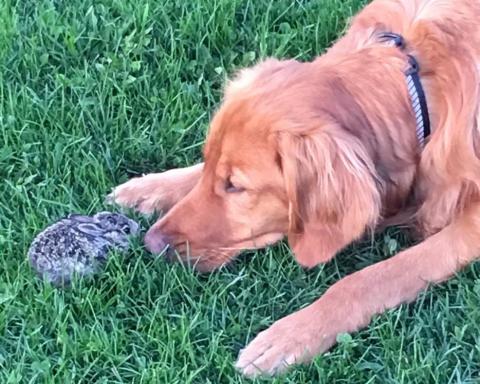
“When Koda and I went to the beach with all the dogs swimming and chasing tennis balls, Koda started to vibrate with excitement. So many beautiful dogs and such good-hearted people, I knew I wanted to be part of this organization. They needed me for the Goldzilla planning team, and that’s where I went,” said Andy.
Andy also signed up to foster, transport, and make home visits. One of the most memorable events was his first transport from Chicago because he witnessed the start of a new life for the dogs from Turkey. It compelled him to foster Heath, who came from Turkey.
“Koda became the perfect mentor for other fosters,” said Andy. “And as for Heath, he is now my foster failure and has stepped up to carry on the mentoring legacy of beloved Koda, who is now an angel in heaven.”
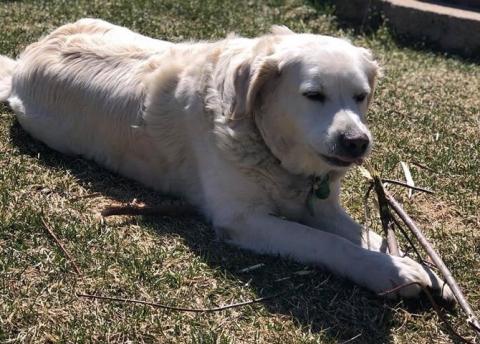
Protect Your Dog Against Heartworm Disease
RAGOM strongly advocates heartworm testing and prevention—in fact, our adoption agreement requires that adopters will keep their dog on a heartworm prevention protocol. Heartworm disease is potentially life-threatening, but it is completely preventable by administering monthly heartworm preventative medication.
Heartworms are transmitted by the bite of an infected mosquito, and heartworm disease has been reported in all 50 states. Full-stage heartworm disease can only be prevented by heartworm medications that kill off the immature larvae in the dog’s body before they become adults. Prevention is much easier, safer for your dog, and less expensive than treating a case of heartworm disease.
If your dog is not protected by monthly heartworm preventive medications, he or she is at definite risk of becoming infected with heartworms. This potentially fatal disease can result in adult heartworms living in your dog’s lungs and heart, causing many serious health problems.
Dogs infected with heartworms cough (sometimes expelling blood) and tire easily. Left untreated, heartworms will multiply and grow—sometimes up to 12 inches long—putting considerable stress on your dog’s heart and lungs.
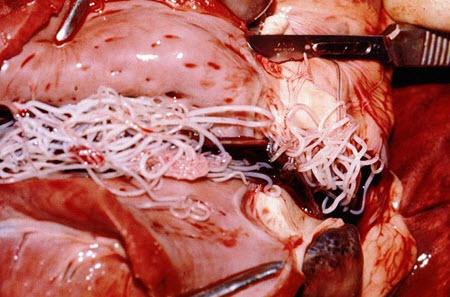
Treating a dog for heartworm disease can cost $2,000 to $3,000 depending on the stage of the disease and requires the dog to be on strict crate rest while their body eliminates the decomposing worms. Heartworm treatment is lengthy and is physically taxing and uncomfortable for the dog.
If you have not been keeping your dog on heartworm preventatives, please begin right away. However, it is important to first have your vet test your dog for heartworms. Giving heartworm prevention medication to a dog that already has heartworm disease can be very risky and further compromise your dog’s health.
RAGOM recommends that you talk to your vet about heartworm disease to learn more about symptoms, treatment, and most importantly—prevention.
Grateful for What We Have, but We Could Use a Little Help
We have much to be grateful for at RAGOM.
All of the dogs at RAGOM are safe in loving foster homes. Our volunteers are doing amazing things every day to ensure each dog gets care, and we are continuing to rescue dogs in need (while following social distancing guidelines and local ordinances).

We know times are tough. But if you’re able, we could use a little help.
Although our adoptions are on hold while we get through the pandemic, our expenses keep coming in. Normally, adoption fees make up a significant part of our monthly budget, and regular donations arrive in our mailbox.
We have 75 dogs currently in our care, and they’ll all be with us at least through the pandemic. In addition to their veterinary bills, we need to cover their monthly prescriptions: heartworm and tick preventatives, parasite medications, antibiotics for ear infections, medicines for fearful dogs who are overcoming trauma, and pills for arthritic senior dogs.
We are bracing and preparing for the months ahead. If previous economic downturns are any indication, we may see a large increase in surrendered dogs in the coming months. We are doing all we can to prepare, so we’ll be able to welcome and care for a potential influx of Goldens.
Julie gave us a big surprise

Several weeks ago, five-year-old Julie arrived in our care. We rescued her from an auction during a breeder sellout. She was so emaciated her ribs protruded.
Julie was being fostered in South Dakota, where vet surgeries are still being performed. Yesterday, her foster brought her to the vet for her spay appointment. Before surgery, the veterinarian examined her and noticed something shocking: Julie is very pregnant. She’s due to give birth any day.
This came as quite a surprise, because another vet clinic somehow missed the pregnancy just a few weeks before. Julie’s foster mom had noticed some little changes, but she’d been giving Julie extra food to help her gain weight, and many breeder rescues arrive with low hanging mammaries. And because Julie is shy, her foster hadn’t been rubbing her belly.
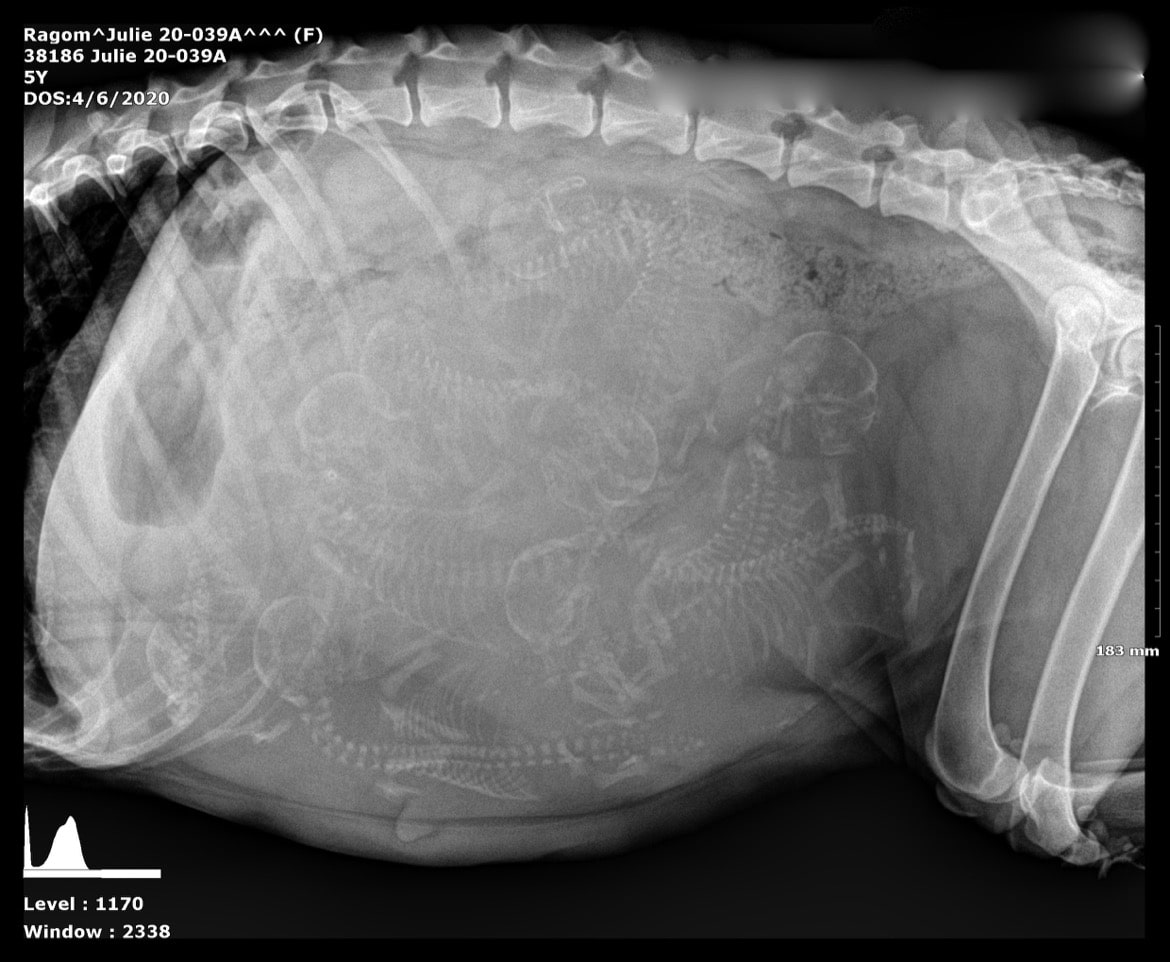
Surprise! Julie’s x-ray reveals lots of puppies.
Julie’s foster didn’t have the needed supplies to care for a mama dog in labor, or the puppies that follow. We’re in the midst of a pandemic and we had a dog ready to give birth at any moment, so quick decisions had to be made. A volunteer drove for hours to get Julie to a new foster who had the needed equipment, as well as previous experience in caring for mama dogs and infants.
We are excited and ready to give Julie and her puppies the care they need. But her story is just one of the 75 dogs currently in our care. Each of them requires funds to ensure they stay safe and healthy. If you’re able to help, we’d be grateful for your support.
You’re Invited to Celebrate Our 35th Anniversary!
Join Us February 15 for This Special Event
RAGOM was founded by Jane Nygaard on February 14, 1985, and has since saved more than 9,000 Golden Retrievers and Golden Retriever mixes.
Join us for our “Be Mine” 35th Anniversary Celebration. This Valentine’s Day-themed event will include appetizers, non-alcoholic beverages, a cash bar, as well as a “Foster Show,” raffles, kissing booth, and much more.
Saturday, February 15, 2020
5:00pm to 8:30pm
Hyatt Regency Minneapolis
1300 Nicollet Mall
Minneapolis, MN 55403
Tickets
Adult: $16 per person
Youth ages 8 – 14: $10 per person
Children 7 and under: Free
Purchase tickets online in The RAGOM Shop!
Do you have a RAGOM story to share?
If so, please submit your story to Carolyn Maset ([email protected]) by February 8.
For Out-of-Town Travelers
The Hyatt Regency Minneapolis has generously given RAGOM a room block discount. If you are traveling from outside the metro area, please consider staying at the Hyatt for a discounted rate of $139, plus a $100 non-refundable pet deposit. To receive the discount, mention you’re with RAGOM upon booking.
Please note: For insurance liability and compliance purposes, our anniversary event at the Hyatt is limited to dogs in RAGOM foster care as of February 15, 2020. Resident dogs and other non-RAGOM dogs are not able to attend.
For a list of RAGOM foster dogs who will be celebrating with us, visit the official event page.
Team Effort Saves RAGOM Dog Lena from Icy Waters
Foster dog Lena went missing on Christmas Day and was rescued 16 hours later.
Lena went missing on Christmas Day in the late afternoon. When a RAGOM dog goes missing, a volunteer team springs into action to coordinate search efforts that include creating and placing signs, alerting authorities, and building awareness of a lost dog that starts with Facebook.
Some searches last a few hours, while others stretch on for days, sometimes weeks. Lena was missing for 16 hours when she was sighted, and no one could have imagined the peril this sweet girl was in.
On December 26 around 8:00 am, Dave Frisch, a Worthington resident familiar with Lena’s story because of the Facebook post about her, was driving on Lake Avenue near Vogt Park and quickly scanned the mostly frozen lake.
Much to his surprise and horror, he saw Lena bobbing up and down in a small patch of open water. He quickly notified the Worthington Police, who notified RAGOM volunteer Kelly Burns.
Officer Tyler Olson and Mike Burns, Kelly’s brother, were first to the scene and bravely ventured onto thin lake ice to rescue Lena. The ice became precariously thin as they approached Lena so they stopped several yards away from her.
With only a nylon tow strap in hand, Officer Olson began tossing the tow strap in Lena’s direction until he was able to get a loop around her head. He gave the strap to Mike and lay flat on the ice to distribute his weight and inch closer to Lena while Mike gently pulled Lena up and out of the water.
The two men guided Lena to safety and put her in the front seat of a car where the heat and fans were on the highest settings during the drive back home. Once home, Lena had a warm bath and was dried with towels and wrapped in blankets that had been warmed in the clothes dryer.
No one knew how long Lena had been in the icy water. But it is a RAGOM Christmas miracle that word of Lena going missing spread so quickly via Facebook, a good Samaritan located Lena and reported the sighting, and a brave police officer and a citizen put themselves in harm’s way to bring Lena safely back home.
RAGOM extends their deepest gratitude to everyone involved in the search and rescue: Dave Frisch, the Worthington Police Department, Officer Tyler Olson, Officer Brandon Peil, and those who mobilized in the search efforts on Christmas day and December 26: Mike and Missy and Sydney Burns, Missy’s father Jerry, Scott Burns and family, Kelly Burns, the village of RAGOM volunteers, and The Retrievers.
Read the original article in The Globe
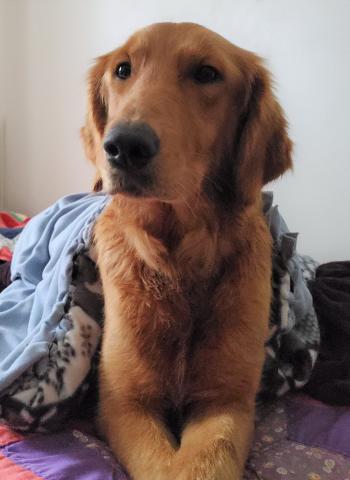
Some Rescued Dogs Need a Role Model to Thrive
Some dogs who come into RAGOM’s care have the “Another dog REQUIRED” stipulation on their dog bio page, and many potential adopters have asked for additional information regarding this policy.
![]() Another dog REQUIRED
Another dog REQUIRED
Examples of RAGOM dogs who require another larger, confident resident dog include former commercial breeder dogs (referenced in the information shared below as “puppy mill dogs”), dogs who lack socialization, dogs who have been abused or neglected, and dogs with separation anxiety.
RAGOM, as well as many other rescue organizations, has learned through years of experience with these dogs that they require a “dog role model.” The role-model dog can teach rescued dogs things they cannot learn from a human, such as socialization, not to fear loud or unfamiliar noises, and most importantly, that humans can be trusted to love and care for them.
The following information is excerpted from a Best Friends Animal Society publication written by Franklin D. McMillan, DVM, titled Understanding and Caring for Rescued Puppy Mill Dogs. This research provides strong evidence that for some RAGOM dogs, having another dog in the adoptive home does indeed warrant enforcement because it is so effective.
From Understanding and Caring for Rescued Puppy Mill Dogs as researched by Best Friends Animal Society in collaboration with the University of Pennsylvania School of Veterinary Medicine, and written by Dr. McMillan:
Having other dogs in the home
The recommendation to have another dog or dogs in the puppy mill dog’s adoptive household is so important that I want to look at it in some depth here.
First, because item number one (having patience) on the above list [see link to download complete PDF at the end of this article] of most effective rehabilitation methods is not really doing something as much as it is simply maintaining a particular attitude (and, in fact, not doing something), I regard this second item on the list as the most appropriate answer to the question, “What is the best thing to do to help puppy mill dogs get better?”
The answer: “Have or get another dog as a companion and role model for the puppy mill dog.”
This method has come to be known as so beneficial to the emotional recovery of puppy mill dogs that some rescue groups involved with the adoption of these dogs have made it their policy that puppy mill dogs will only be adopted into homes with other dogs.
The single most important characteristic of the other dogs in the household—compatibility—was almost entirely omitted from adopters’ comments, most likely because it is considered so obvious that it is merely assumed. “Friendly” comes close to “compatibility” but indicates a slightly higher level of relationship and, while certainly beneficial, is not as essential as compatibility.
In other words, the absolutely necessary feature of the other dog(s) in the house is that they are compatible—or get along—with the puppy mill dog. If they are out-and-out friendly toward the puppy mill dog, that is certainly an added bonus.
How does the presence of other dogs help the puppy mill dog? There are at least four ways that puppy mill dogs may benefit by having another dog around. The first is the one people think of most often: that the puppy mill dog learns from and models his/her behavior on the normal-acting pet dog.
The canine species is imitative in some of its behavior and hence would be, if not severely inhibited by negative emotions like fear, receptive to following the lead of the behavior of the other dogs in the house. Here are some adopters’ comments in which this appears to be happening:
- She learned how to play by watching our two other dogs. Then she learned by interacting with them. She now plays with other dogs and with toys.
- She is more willing to go along with things as she follows my other Bichon; however, Roxie needs to have her main caretaker with her as well. Seeing her sister (normal Bichon) and being with her helps Roxie a great deal! She has learned so much from being with a naturally socialized dog.
- He will seem to get overstimulated in large open areas like the off-leash dog parks, where there are lots of people, lots of dogs, lots of action, and then tends to get confused. He very much looks to my other dog(s) for direction.
- She was always watching [the other dogs] and doing what they did.
The second way that the presence of other dogs may help the emotionally struggling puppy mill dog is through a psychological phenomenon termed “social buffering.” Social buffering is an effect whereby the presence of companions can reduce the intensity of—or buffer—the emotional reaction to something frightening or stressful.
The scientific evidence also shows that the emotional response of the companion is key for the social buffering to work. A study with rats showed that when the rat being studied was accompanied by a fearful rat companion, the benefit was much less than when the companion rat was unafraid.
What this means for puppy mill dogs is that the presence of confident and calm companion dogs would offer the greatest benefit to the puppy mill dogs’ emotional state in situations when they are fearful.
The third way the puppy mill dog benefits from having other dogs around is that it takes the one-on-one intensity, or pressure, off. When the puppy mill dog is the only dog in the house, all of the human-dog interaction involves the puppy mill dog, which can be too intense for a shy or fearful dog.
A rough analogy is the elementary school student in a classroom. Being surrounded by fellow students greatly diminishes the pressure of the teacher-student interaction on any one student. But if only one of the students comes to school one day, it’s a whole different story.
The fourth way that puppy mill dogs benefit is more indirect than the other three ways. When adopters have only one dog in their house and that dog fears them, won’t make eye contact with them, and won’t let them touch her, it’s difficult and frustrating for even the strongest, most loving and most patient of humans.
And because we now know that puppy mill dogs can show these reactions and behaviors for months and even years before improving, the patience this requires when the puppy mill dog is a person’s only dog would need to be almost superhuman.
However, contrast that to the adopter who has a couple of other pet dogs who interact with that person in a normal way. This person—let’s say a woman—receives all the love and positive feedback she could want from her “normal” pet dogs, making it much, much easier for her to give the puppy mill dog all the time he needs to emotionally recover from the mill experience.
The other potential down side is that it seems on occasion the dog fearful of humans may become overly dependent upon her dog companions and use them as a security blanket. If the fearful dog is always able to gain a sense of security from her dog companions, she may have little or no motivation to overcome her fear of humans.
[It has been RAGOM’s experience, as Dr. McMillan’s research confirms, that the benefits of another confident dog in the home far outweigh any potential downfalls.]
RAGOM thanks Best Friends Animal Society and Franklin D. McMillan, DVM for their permission to publish this information on our website. To read the entire PDF, download Understanding and Caring for Rescued Puppy Mill Dogs (PDF 4MB).
Clean Your Dog’s Ears Weekly to Prevent Ear Infections
Help your dog become accustomed to this important grooming activity.
If you live with a Golden Retriever you’ve no doubt dealt with ear infections, which occur when those big Golden ears trap moisture in the inner ear. This causes bacteria and yeast growth, often indicated by a foul smell and dark buildup. Your veterinarian can determine if the problem is bacteria or yeast (or both) and prescribe treatment.
So what can you do to prevent ear infections? Clean and inspect your dog’s ears weekly, and after bathing, swimming, or rolling in a mud puddle or dirt. Ask your veterinarian to recommend an ear cleaning solution with a drying agent to keep your dog’s ears dry, clean, and healthy.
Some dogs enjoy having their ears cleaned. But many dogs—especially if their ears have never had proper care—need a slow and careful introduction to ear cleaning.
To help your dog become more comfortable with this essential grooming activity, watch this helpful video entitled Fear-Free Ear Cleaning (permission generously granted by #thankstomaddie).
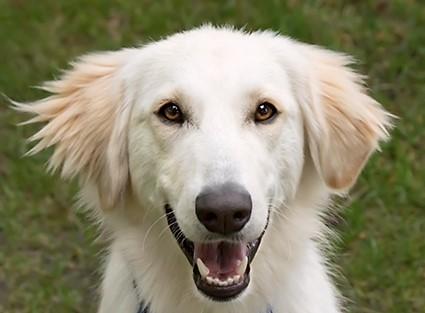
Please note that although the Maddie’s Fund website supports rescue leadership and volunteers, much of its content is also very helpful for pet owners. Take advantage of this excellent tutorial!
See also:
Regular Teeth Cleaning Helps Prevent Health Issues
An Eye Infection or Injury Requires Immediate Veterinary Care
Regular At-Home Teeth Cleaning Can Help Prevent Health Issues
Your dog is susceptible to many of the same dental problems as humans such as bad breath, tartar buildup, gum disease, and tooth loss. Furthermore, bacteria from gum disease can invade your dog’s bloodstream and lead to increased risk for heart, kidney, and liver disease.
Regular teeth cleaning can help prevent health issues and expensive treatment—and avoid having your dog anesthetized for cleaning procedures.
To help your dog enjoy teeth brushing and turn a potential negative experience into a positive one, watch a helpful video entitled Fear-Free Tooth Brushing (permission generously granted by #thankstomaddie).
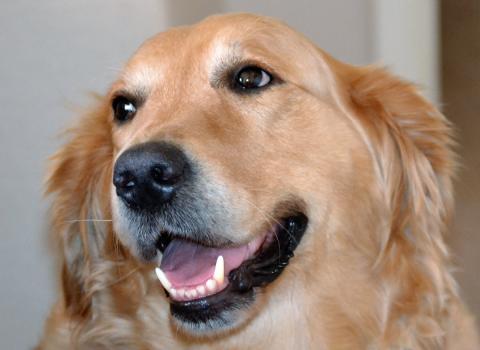
Please note that although the Maddie’s Fund website supports rescue leadership and volunteers, much of its content is also very helpful for pet owners. So please take advantage of this excellent tutorial!
See also:
Clean Your Dog’s Ears Weekly to Prevent Ear Infections
An Eye Infection or Injury Requires Immediate Veterinary Care
